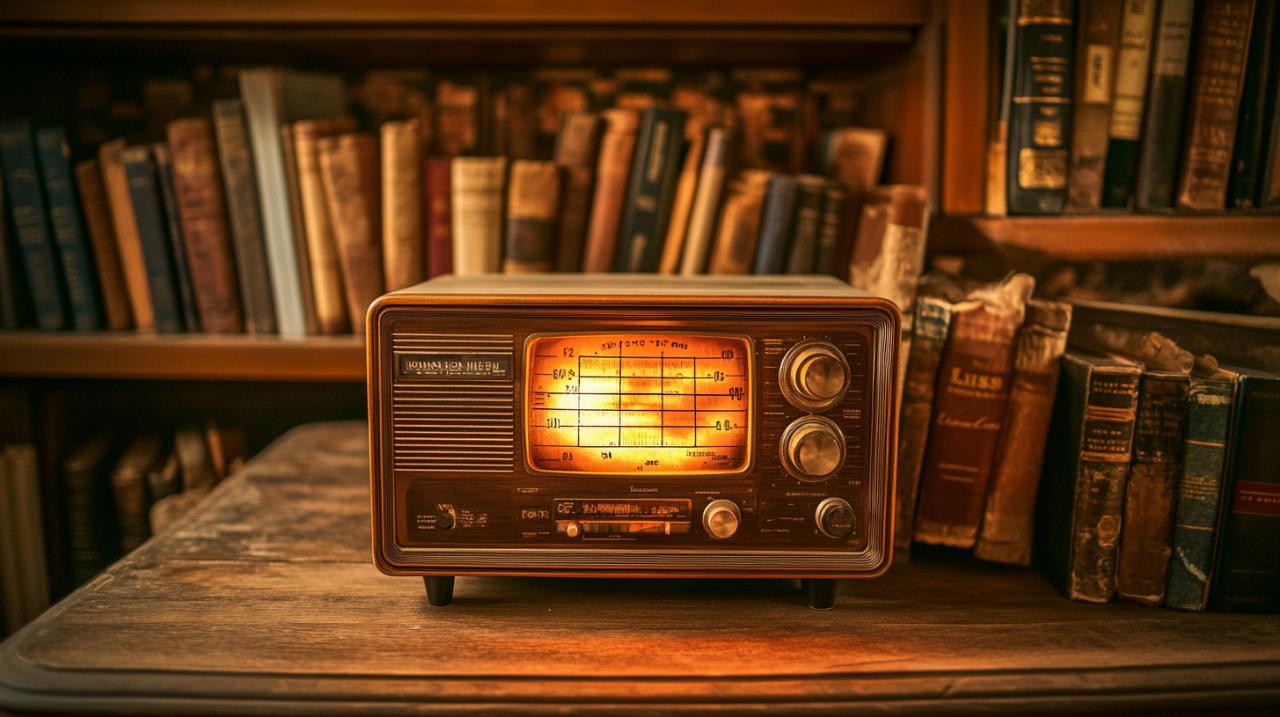The advent of wireless broadcasting marked a transformative moment in the dissemination of ideas, fundamentally altering how individuals engage with philosophical thought and cultural movements. Radio emerged not merely as a technological novelty but as a powerful conduit for intellectual exchange, capable of reaching vast audiences regardless of literacy or social standing. Its influence permeated the collective consciousness, shaping public opinion and fostering a shared sense of identity across diverse communities. The immediacy and intimacy of radio allowed it to transcend traditional barriers, making complex philosophical concepts accessible to the everyday listener and embedding cultural trends into the fabric of daily life.
The Wireless Revolution: Broadcasting Philosophical Ideas to the Masses
Democratising access to philosophical discourse
Before the rise of mass media, philosophical discourse remained largely confined to academic institutions and printed texts, accessible primarily to those with formal education and literacy. Radio fundamentally disrupted this paradigm by offering a medium that required neither the ability to read nor financial means to participate. By the early 1930s, over 40 per cent of American households owned a wireless set, a figure that climbed to 83 per cent by the decade’s end. This widespread adoption meant that philosophical ideas, once reserved for the intellectual elite, could now be broadcast directly into the homes of ordinary citizens. The wireless made it possible for a factory worker in Manchester or a farmer in Yorkshire to engage with the same debates and discussions as a university professor, thereby democratising access to knowledge in an unprecedented manner.
The format of radio programmes further facilitated this accessibility. Unlike dense academic texts, radio broadcasts employed conversational tones, engaging storytelling, and relatable examples to convey complex ideas. Programmes blended music, drama, and talks, creating an environment where philosophical concepts could be explored without the formality of a lecture hall. This approach not only broadened the audience but also transformed the way philosophical ideas were understood and internalised. Listeners could reflect on ethical dilemmas, political theories, and cultural movements while going about their daily routines, seamlessly integrating intellectual engagement into their lives. For those curious about exploring diverse content, one might escuchar radio to discover how various stations continue to blend entertainment with thoughtful discourse, maintaining this tradition of accessible intellectual exchange.
Radio as a Platform for Intellectual Exchange and Debate
Beyond merely transmitting information, radio established itself as a dynamic platform for intellectual exchange and debate. Programmes such as VoxPop sought to capture the perspectives of the average person, reflecting the growing mass culture and demonstrating that philosophical inquiry was not solely the domain of scholars. This interactive element encouraged listeners to see themselves as participants in a broader conversation, fostering civic engagement and critical thinking. The wireless brought together voices from different social classes and backgrounds, creating a sense of national unity and shared purpose. Politicians, academics, and cultural commentators utilised radio to articulate their views, knowing that their words would resonate across the nation.
Radio’s capacity for immediacy meant that debates could unfold in real time, responding to current events and societal shifts. During the 1930s, listeners tuned in for over four hours daily on average, underscoring the medium’s central role in daily life. This sustained engagement allowed for the development of ongoing dialogues, where ideas could be refined and contested across multiple broadcasts. The wireless also provided a space for controversial voices, such as Father Charles Coughlin, who leveraged the platform to share his political and social views, sparking national discussions. The introduction of the Fairness Doctrine in 1949, which mandated that stations provide equal airtime for differing political perspectives, further institutionalised radio as a forum for balanced intellectual exchange. However, its repeal in 1987 led to a dramatic transformation, with AM radio becoming a haven for talk shows that often embraced more partisan viewpoints, reflecting the evolving nature of public discourse.
Shaping public opinion: how radio broadcasts moulded cultural trends
The Role of Radio Programmes in Spreading Cultural Movements
Radio’s influence extended far beyond philosophical debate, profoundly shaping cultural movements and public taste. The medium played a pivotal role in popularising music genres such as jazz, country, and rock, transforming regional sounds into national phenomena. Shows like the Grand Ole Opry provided a platform for country musicians, giving them access to audiences far beyond their local communities. This national reach not only elevated individual artists but also contributed to the homogenisation and dissemination of cultural trends, creating shared musical experiences across the country. The wireless enabled vocalists to be heard more clearly through the use of microphones, which enhanced individual performances and allowed for a more intimate connection with listeners. Talent programmes such as Major Bowes and His Original Amateur Hour became launching pads for future stars, including Frank Sinatra, illustrating how radio could shape celebrity culture and public admiration.
The impact of radio on music was not limited to performance alone; it also accelerated the production and distribution of new material. Musicians and record labels quickly adapted to the demands of radio broadcasting, releasing songs more frequently to maintain listener interest. This rapid turnover fostered a culture of novelty and constant engagement, where audiences eagerly anticipated the latest hits. Black disc jockeys on stations such as WDIA and WERD became influential community leaders, using their platforms to promote cultural pride and social change. By providing visibility and voice to marginalised groups, radio contributed to the broader civil rights movement and helped reshape societal attitudes. The wireless thus served as both a mirror and a catalyst for cultural evolution, reflecting existing trends while simultaneously driving new ones.
Influencing the Nation: Radio’s Impact on Collective Consciousness
The power of radio to influence collective consciousness cannot be overstated. Its ability to broadcast news and commentary meant that national events, such as the devastating floods of 1937, became shared emotional experiences, fostering a sense of solidarity among listeners. The immediacy of radio news allowed people to feel as though they were witnessing events as they unfolded, creating a communal space for collective grief, celebration, or outrage. This phenomenon was perhaps most famously demonstrated by Orson Welles’ 1938 broadcast of War of the Worlds, which caused widespread panic among listeners who believed an alien invasion was underway. The incident revealed the profound trust the public placed in radio and its capacity to shape perception and behaviour.

Political leaders quickly recognised the potential of the wireless as a tool for communication and persuasion. Franklin D. Roosevelt’s fireside chats exemplified how radio could be used to establish a direct, personal connection with the citizenry, bypassing traditional media gatekeepers. These broadcasts reassured a nation grappling with economic depression and later, the uncertainties of World War II, reinforcing the government’s role while shaping public morale. During the war, the War Department established a Radio Division in 1941, further integrating broadcasting into national strategy. Radio networks collaborated with government programmes, producing content that supported the war effort and maintained civilian morale. This collaboration underscored the medium’s dual role as both an entertainment source and a vehicle for propaganda, influencing public opinion in ways that were both overt and subtle.
By 1941, two-thirds of radio programmes featured advertisements, embedding consumer culture into the daily lives of listeners. This commercial aspect of broadcasting not only funded the industry but also shaped societal values, promoting products and lifestyles that became aspirational symbols. Brands transformed into cultural icons, their messages reinforced through repetitive exposure. The rise of consumer culture, facilitated by radio advertising, contributed to the formation of a collective identity centred around material prosperity and modern living. As television eventually supplanted radio as the dominant medium, the foundational role of the wireless in establishing these cultural and commercial patterns remained undeniable. Early television borrowed extensively from radio in terms of networks, talent, and programming formats, ensuring the continuity of its influence.
In contemporary times, radio continues to hold significant sway, with 82 per cent of Americans aged 12 and older listening to terrestrial radio each week as of 2022. Nearly half of U.S. adults obtain news from radio, demonstrating its enduring relevance in an era of digital media proliferation. The emergence of podcasts, with 42 per cent of Americans aged 12 and older having listened to one in the past month as of 2023, represents an evolution of the radio tradition. Podcasts offer a diverse range of content, from entertainment and learning to news and current events, reflecting the same appetite for accessible intellectual engagement that radio first cultivated. The steady increase in podcast listening since 2013, particularly among younger audiences, suggests that the legacy of radio as a medium for shaping philosophy and culture persists, adapted to modern technological landscapes.
The interplay between radio and popular culture has been reciprocal, with the medium both reflecting and influencing societal norms. Popular culture, defined as the vernacular or people’s culture that predominates at a given time, encompasses styles of dress, slang, rituals, and food, all of which are significantly informed by mass media. Radio’s role in this dynamic has been to provide a platform where these elements can be shared, debated, and transformed. The rapid pace of technological change has ensured that popular culture remains subject to continuous evolution, and radio has consistently adapted to remain a vital participant in this process. From the controversial broadcasts of figures like Howard Stern to the career-ending remarks of Don Imus and Dr Laura Schlessinger, radio has demonstrated its capacity to provoke public discourse and hold individuals accountable, reinforcing its position as a cultural arbiter.
The wireless revolution thus represents a watershed moment in the history of communication, one that reshaped the landscape of philosophical thought and cultural expression. By making intellectual discourse accessible to the masses, fostering platforms for debate, and shaping public opinion through the dissemination of cultural trends, radio established itself as an indispensable force in modern society. Its legacy endures not only in the continued popularity of terrestrial broadcasting but also in the digital evolution of podcasts and online streaming, ensuring that the influence of radio on popular philosophy and culture remains profound and far-reaching.

